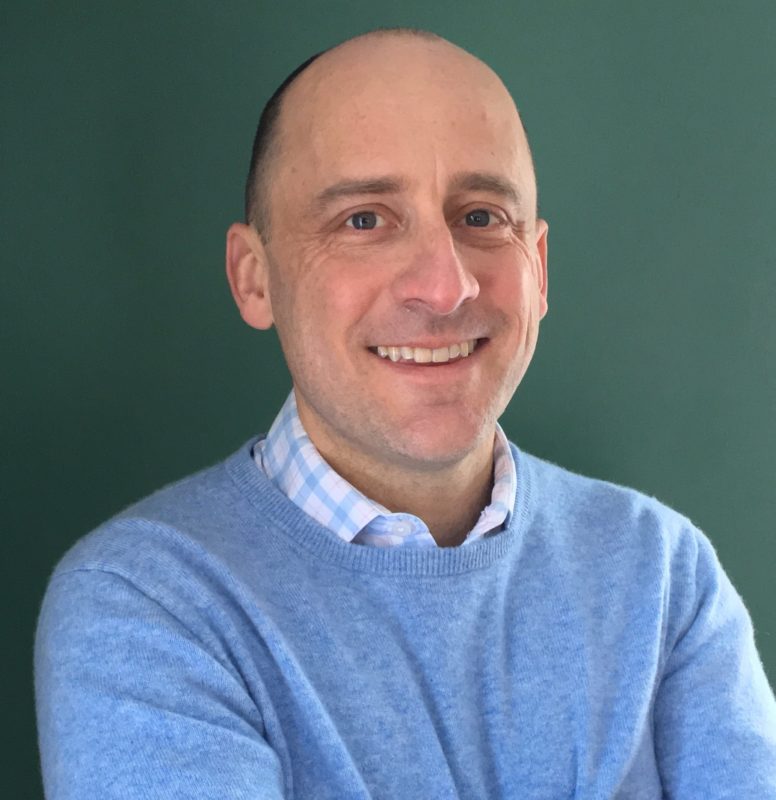AWWI welcomes Dr. John Lloyd as Associate Director of Research, a new position that will increase AWWI’s capacity and expertise for sound, robust science. Read more about what brought John to AWWI and his plans for the new role.

What are your goals for AWWI’s research program as Associate Director of Research?
AWWI has had tremendous success working at the interface of science, policy, and practice, and I look forward to helping ensure that we continue to be a model for collaborative, science-based conservation. More specifically, I am interested in encouraging and supporting work that helps identify and quantify trade-offs between the long-term benefits of avoided climate disruption and the potential shorter-term impacts of increased generation of wind energy on sensitive species. I’d like to see us increase our production of decision-support tools. Finally, I’m also hopeful that over the next few years we can identify strategies to increase the uptake of AWWI’s research findings by decision-makers so that our work has the maximum impact possible on policy and practice.
What sparked your interest in wind energy and wildlife, and in joining AWWI?
What motivates and excites me as a wildlife biologist is the opportunity to use science as a tool for solving the big problems in wildlife conservation. And, right now, there is simply no bigger problem facing wildlife – and people – than climate change, and no more important solution than growing renewable energy. We know that generating more energy from wind, and less from fossil fuels, is a critical part of the strategy to avoid the worst effects of climate change; the challenge we face is how to do so while conserving the wildlife that we all cherish to the fullest extent practicable. AWWI has pioneered a collaborative, science-driven approach to this challenge, and in doing so has shown that low-carbon energy production and wildlife conservation are not mutually opposing goals – quite the opposite, in fact. I can’t think of any better or more important use of my skills and experience than contributing to this effort.
What do you see as the role of sound science in addressing wind-wildlife challenges?
I firmly believe that science can, and should, play a critical role in decision-making, including that involved with the development of clean energy. Science is especially useful and important in tackling complex problems that involve trade-offs among different priorities. Science can help us understand the likely outcomes of our choices and, to the extent that our choices lead to undesirable outcomes for something we value, help us understand how to minimize or avoid those outcomes. It helps remove uncertainty and lets us know that our strategies and solutions are working.
Why do you think it is important to bring together stakeholders from different sectors on the science?
One of the things that I have learned during my career is that the traditional paradigm for applied science – scientists frame the question, design the methods, do the work, and at the end deliver a report to other stakeholders – doesn’t work. We have been trained that this model is key to the objectivity of our research but it is also a principal reason why so much good research in conservation is never put into practice. Involving all of the stakeholders in the research process, from beginning to end, through a practice called co-creation or co-production, improves the likelihood that folks will actually use the findings to make decisions or shape practices. And reducing those barriers between science and action is a good thing, because we know that incorporating scientific research into conservation policy and practice can produce better outcomes.
What do you envision as the future for wind-wildlife – research, outcomes, collaboration?
I think, or at least hope, that the future looks very much like the present: a focus on collaborative, science-based solutions. What needs to change is the pace at which we carry out our work. We still have time to avoid the worst effects of climate change, both of wildlife and people, but the science is quite clear in telling us that our window of opportunity is closing quickly. We all need to start pulling in the same direction if we are to solve this problem, and the AWWI model offers a demonstrably successful approach for informing that kind of unified action.